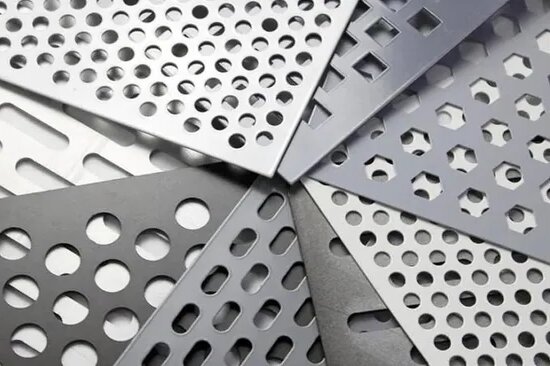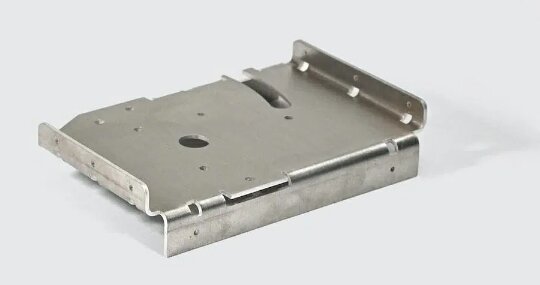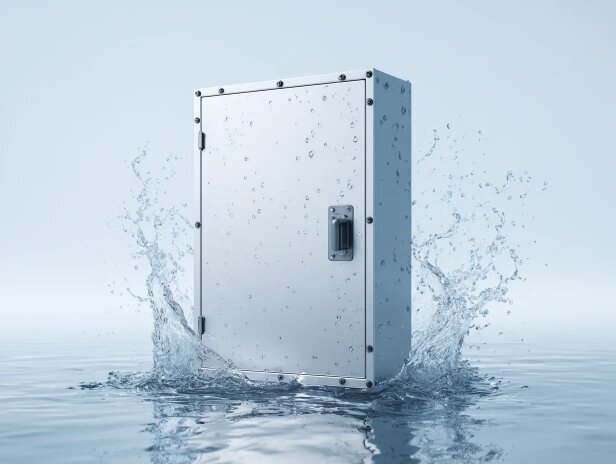Over time, metal components exposed to moisture and chemicals can break down. Rust can quickly damage metal parts. Corrosion costs industries billions each year. So, how can you protect metal surfaces without spending too much? Zinc plating offers an affordable solution. This plating process improves the durability and lifespan of the metal.
In this article, we will examine the zinc plating process, its advantages, and its applications in various industries. Let’s look at how it works and why it is so effective in providing lasting protection for your parts.
What Is Zinc Plating?
Zinc plating, also called zinc electroplating or galvanizing, is the process of adding a thin zinc layer to a metal surface. The primary purpose is to protect the metal underneath from rust and corrosion. Zinc serves as a sacrificial anode, meaning it will corrode before the metal underneath does.
This protection remains effective even if the zinc coating becomes scratched. It’s beneficial for parts exposed to harsh conditions, like in the automotive, construction, and outdoor industries.
How does Zinc Coating protect metal Surfaces?
Zinc coating offers two main types of protection:
- Barrier Protection: The zinc creates a physical barrier, blocking moisture, oxygen, and chemicals from reaching the base metal and causing corrosion.
- Sacrificial Protection: Zinc corrodes faster than the metal underneath. Therefore, if the coating becomes scratched, the zinc sacrifices itself, protecting the base metal from rust.
The Electrochemical Process of Zinc Plating
Zinc plating uses an electrochemical process. First, the metal part is placed in a bath of zinc salts. An electric current passes through the solution, moving zinc ions to the surface of the metal. This process makes the zinc bond tightly to the metal.
The thickness of the zinc layer depends on the duration of the part’s immersion in the bath and the amount of current applied. The result is a smooth, even coating that provides strong, durable protection against corrosion.
How Does Zinc Plating Work?
Zinc plating involves applying a thin layer of zinc to a metal surface to protect it from corrosion. Below, we’ll break down how the electroplating process works step by step.
Step 1: Preparation of the Metal Surface
The metal part to be plated is thoroughly cleaned to remove any dirt, oil, grease, or oxidation. This is typically done using an acid bath or abrasive cleaning techniques. Clean surfaces allow the zinc to bond more effectively to the metal.
Step 2: Submerging the Metal in a Zinc Electrolyte Solution
Once cleaned, the metal part is submerged in a zinc electrolyte solution. This solution contains a mixture of zinc salts, typically zinc sulfate or zinc chloride, dissolved in water. The solution also includes other additives to ensure the plating process works smoothly.
Step 3: Setting Up the Electroplating Bath
The metal part is connected to the negative side (cathode) of an electrical circuit, while a zinc anode is placed on the positive side. The electrolyte solution is circulated in the bath to maintain a consistent flow of zinc ions.
Step 4: Applying Electric Current
An electric current is applied through the electrolyte solution. This current causes zinc ions in the solution to move toward the negatively charged metal part (the cathode). As these zinc ions reach the metal surface, they are reduced and deposited as a solid zinc coating.
Step 5: Zinc Deposition
Over time, the electric current causes more zinc ions to be deposited onto the metal part’s surface, creating a thin but strong layer of zinc. The thickness of this coating can be controlled by adjusting the current and the time the metal is left in the solution.
Step 6: Rinsing and Drying
After the desired coating thickness is achieved, the plated metal part is removed from the electrolyte bath. It is then rinsed to remove any excess solution and dried.
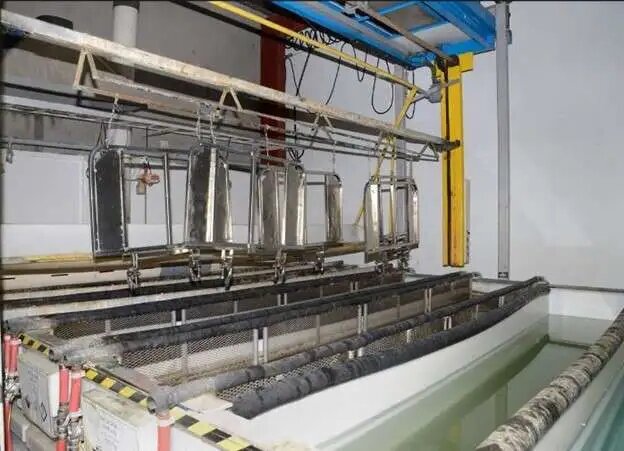
Types of Zinc Plating Methods
Different zinc plating methods are employed based on the part size, coating thickness requirements, and working environment. Each technique offers a unique way to apply zinc, with its own strengths and ideal use cases.
Electro galvanizing
Electro galvanizing is the most common method. It uses electricity to coat metal parts with zinc. The result is a thin, smooth, and bright zinc layer. This method is ideal for parts that need a clean finish and precise dimensions.
It’s often used for automotive parts, fasteners, and electronics. While the coating is thinner than other methods, it provides good protection in indoor or low-moisture environments.
Hot-Dip Galvanizing
Hot-dip galvanizing involves dipping metal parts into a bath of molten zinc. This creates a much thicker and rougher coating than electro-galvanizing. The bond is strong, and the zinc layer can withstand harsh weather and exposure.
This method is commonly used for outdoor structures, fences, steel beams, and construction hardware. It offers long-term corrosion resistance in demanding environments.
Mechanical Plating
Mechanical plating does not use electricity. Instead, it uses friction and impact to cold-weld zinc powder onto the metal part. This process is performed in a rotating drum containing glass beads, water, and other chemicals.
It’s often used for small parts, such as screws, nuts, and washers. One benefit is that it avoids hydrogen embrittlement, which can weaken some metals during electroplating.
Sherardizing
Sherardizing is a heat-based method in which metal parts are placed in a closed drum containing zinc powder. The drum is heated to a high temperature, allowing zinc vapor to bond with the part’s surface. This creates a uniform, diffusion-bonded zinc layer.
Sherardizing is best for complex shapes and threaded parts. It offers good wear and corrosion resistance, especially in marine or chemical environments.
Key Benefits of Zinc Plating
Zinc plating is widely used because it’s practical, reliable, and cost-friendly. It helps protect metal parts, enhances their appearance, and extends their lifespan—even in harsh environments.
Corrosion Resistance
The most significant benefit of zinc plating is its strong protection against rust. Zinc forms a layer that takes the damage first, so the metal underneath stays safe. Even if the coating is scratched, the zinc continues to protect the part.
Cost-Effectiveness
Zinc plating is one of the more affordable coating options. The materials and tools needed are readily available and relatively inexpensive. The process works well for both small batches and large runs, which helps save money.
Aesthetic Finish
Zinc plating also enhances the appearance of parts. It gives a bright, clean finish that can be smooth or matte, depending on the process. This finish improves the look of parts and also makes them easier to inspect.
Lubricity and Wear Resistance
Zinc-plated parts often have less friction on their surfaces. This makes them easier to install and helps them last longer in use. Additional coatings or treatments can be applied to reduce wear further.
Limitations of Zinc Plating
Zinc plating offers good protection and value, but it’s not perfect for every job. There are some limits to what it can handle. It’s essential to keep these in mind when choosing the right coating.
Limited Heat Resistance
Zinc plating doesn’t hold up well under high heat. When temperatures exceed 200°C (392°F), the coating can begin to break down. This can lead to peeling, color changes, or a loss of protection.
Sacrificial Layer Wears Down Over Time
Zinc protects the metal by wearing it away first. That’s how it stops rust. But in harsh conditions, the zinc layer can wear off faster. Once the zinc is gone, the base metal is exposed and can rust. This means zinc plating won’t last forever.
Not Ideal for Every Situation
Zinc plating isn’t the best fit for all uses. In places with constant saltwater or strong chemicals, it might not hold up well. Thicker or more specialized coatings may be needed there.

Zinc Plating Finishes and Appearances
Zinc plating doesn’t just protect metal—it can also change how it looks. Different finishes can be added after plating. These finishes affect both the color and the part’s resistance to rust and wear.
Clear (Blue) Zinc
Clear zinc, also known as blue zinc, has a shiny silver appearance with a slight blue tint. It’s the most common type of finish. This option is suitable for parts used in indoor or mild environments. It offers basic rust protection and a clean, bright surface. It’s often used for items like screws, brackets, and miniature housings.
Yellow Zinc
Yellow zinc has a gold or rainbow-like color. This finish is achieved through a special coating called chromate. It gives better rust protection than clear zinc. It’s a good choice for car parts or machines that need extra protection. Yellow zinc also helps paint stick better if the part will be painted later.
Black Zinc
Black zinc has a dark, matte surface. This finish comes from a special post-treatment step. It gives medium rust protection and doesn’t reflect light. It’s often used when appearance matters, such as in electronics, military parts, or consumer products. The dark color also helps hide the part in low-light or tactical situations.
Olive Drab Zinc
Olive drab zinc has a dull green-brown color. It’s mainly used for military or aerospace parts. This finish gives strong rust protection and blends in with military gear. It also reduces shine, which is helpful for outdoor or field use.
Common Applications of Zinc Plating
Zinc plating is widely used in various industries due to its ability to protect metal parts, provide a clean appearance, and offer a cost-effective solution. It works well for both small items and large batches of parts.
Automotive Parts
The auto industry uses zinc plating for many metal parts. It helps protect items such as brackets, fuel lines, brake parts, and suspension components. These parts often come into contact with water, dirt, and road salt. The zinc layer helps prevent them from rusting and extends their lifespan.
Fasteners and Hardware
Small parts like bolts, nuts, screws, and washers are often zinc-plated. These are used in many machines and products and are frequently exposed to air or moisture. The zinc helps prevent rust, which can damage threads or make parts difficult to disassemble. It also makes them easier to work with during the assembly process.
Electrical Components
Connectors, terminals, and casings in electrical products often use zinc plating. These parts must remain clean and rust-free to function correctly. The zinc layer protects the surface and helps keep the parts working over time. It also helps reduce wear from plugging and unplugging.
Consumer Products
Zinc plating shows up in many everyday items—like door hinges, drawer runners, and lamps. It helps these parts work more efficiently and look better. The coating prevents rust and keeps the surface smooth, allowing the product to remain in good condition for longer.
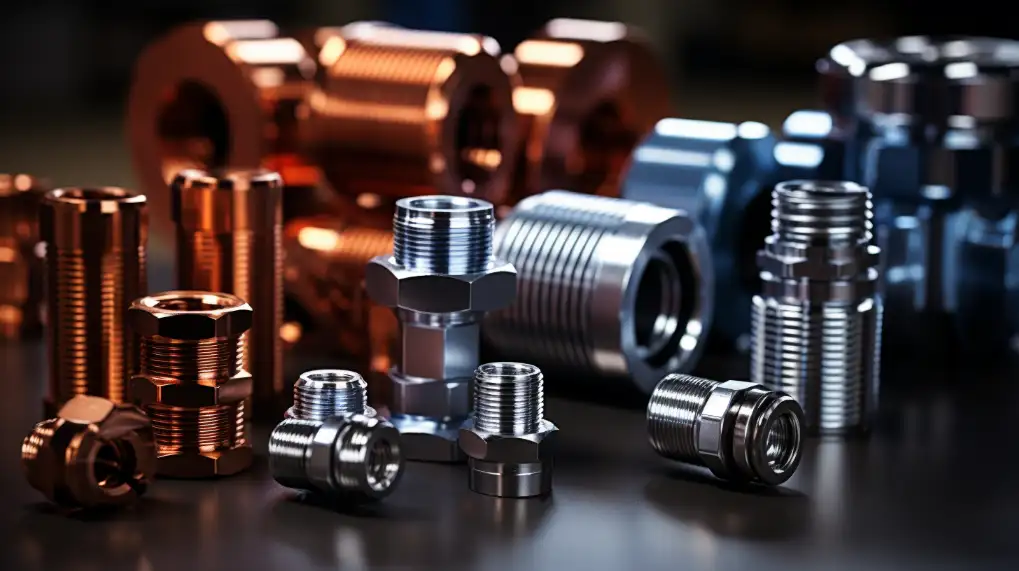
Materials Compatible with Zinc Plating
Zinc plating works best with certain metals that allow the coating to bond tightly and provide strong corrosion protection. Some materials work very well, while others may require special preparation or are not ideal for this purpose.
Steel and Iron
Steel and iron are the most common materials for zinc plating. These metals form strong bonds with zinc and are widely used in industries such as automotive, construction, and manufacturing. Both carbon steel and alloy steel can be plated efficiently and effectively.
Brass and Copper Alloys
Brass and copper alloys can also be zinc-plated. However, extra care is needed during surface preparation. These metals tend to oxidize quickly, so cleaning and applying a proper undercoat can help the zinc stick better.
Limitations on Aluminum and Stainless Steel
Zinc plating is not typically used on aluminum or stainless steel. These metals have natural oxide layers that prevent the zinc from bonding well. If plating is needed, special surface treatments or intermediate coatings must be used first.
Zinc Plating vs. Other Metal Coatings
Zinc plating is just one of many coating options. Each method has distinct strengths, costs, and aesthetic considerations. Choosing the right one depends on your part’s use, environment, and budget.
Zinc Plating vs. Nickel Plating
Zinc plating is mainly used for corrosion protection. It offers sacrificial protection and is more affordable. It’s ideal for fasteners, brackets, and structural parts.
Nickel plating provides a harder, smoother finish with better wear resistance. It is more decorative and often used for electronics, tools, and parts that need higher surface hardness. Nickel plating is also more expensive and doesn’t offer sacrificial protection like zinc.
Zinc vs. Chrome Plating
Zinc plating protects metal from rust. It’s used where function matters more than appearance. The finish is soft, matte, or slightly shiny.
Chrome plating is a decorative process that adds a bright, mirror-like finish. It also offers excellent wear resistance. Chrome is used on car parts, tools, and fixtures where both looks and durability are needed. It is more costly and not meant for sacrificial corrosion protection.
Zinc vs. Powder Coating
Zinc plating is thinner and mainly protects against rust. It works well for small parts or where tight tolerances are required.
Powder coating is a dry, thick coating applied with a spray gun and cured with heat. It gives strong protection, adds color, and is very durable. Powder coating is ideal for outdoor products, machinery frames, and consumer goods. It’s thicker and may not be suitable for parts with fine threads or detailed features.
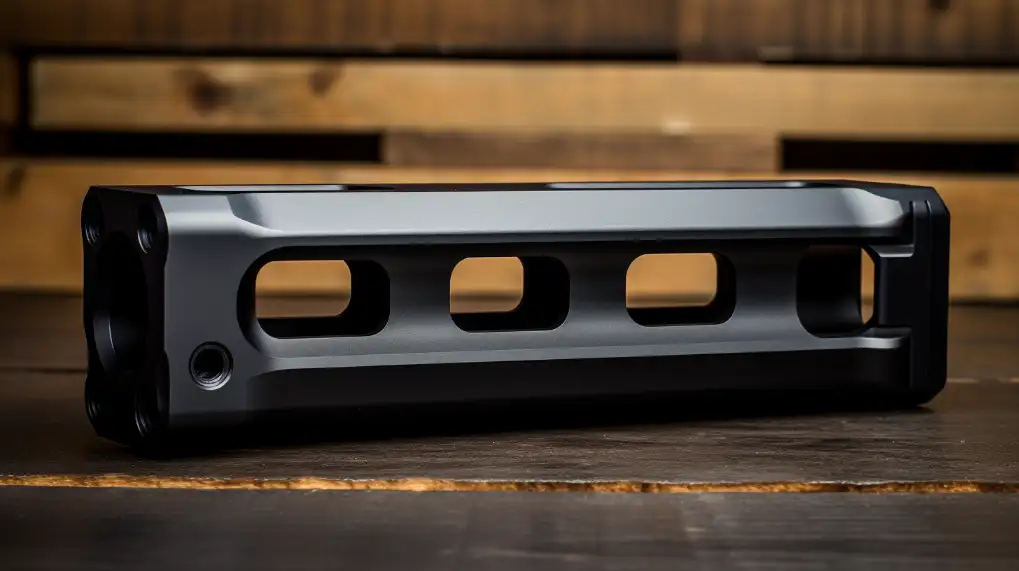
Zinc Plating Thickness and Standards
The thickness of a zinc coating affects how well it resists corrosion. Standards help define the right thickness and ensure quality across industries. These guidelines also help ensure compliance with safety and environmental regulations.
Common Coating Thickness Ranges
Zinc plating thickness usually ranges from 5 to 25 microns (0.0002 to 0.001 inches). Thinner coatings, around 5–8 microns, are used for indoor parts with low moisture exposure. Thicker coatings, such as those ranging from 12 to 25 microns, are used for outdoor or high-corrosion areas.
ASTM, ISO, and RoHS Compliance
Several standards guide zinc plating:
- ASTM B633 is the leading U.S. standard for zinc coatings on iron and steel. It defines coating classes, thicknesses, and types of chromate finishes.
- ISO 2081 is the international standard for zinc plating using electroplating. It outlines coating thickness and surface finish for various applications.
- RoHS Compliance ensures that the plating process does not include restricted hazardous substances like hexavalent chromium. RoHS-compliant zinc plating utilizes safer passivation methods, including trivalent chromates.
Conclusion
Zinc plating is a protective process that applies a thin layer of zinc to metal parts to prevent rust and extend their service life. It works by forming a barrier and offering sacrificial protection. It’s a cost-effective and reliable solution used in the automotive, electrical, construction, and consumer goods industries.
Are you looking for zinc plating support for your next project? Contact us today to get a fast quote or speak with our technical team.
Hey, I'm Kevin Lee

For the past 10 years, I’ve been immersed in various forms of sheet metal fabrication, sharing cool insights here from my experiences across diverse workshops.
Get in touch

Kevin Lee
I have over ten years of professional experience in sheet metal fabrication, specializing in laser cutting, bending, welding, and surface treatment techniques. As the Technical Director at Shengen, I am committed to solving complex manufacturing challenges and driving innovation and quality in each project.

